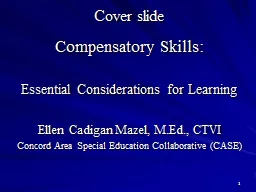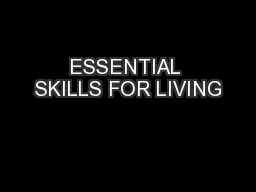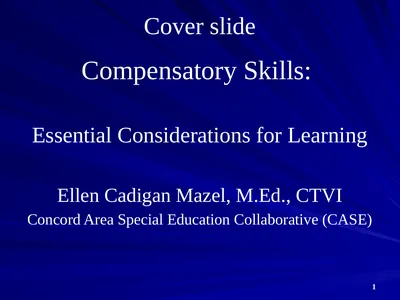PPT-Compensatory Skills: Essential Considerations for Learning
Author : trish-goza | Published Date : 2019-02-08
Ellen Cadigan Mazel MEd CTVI Concord Area Special Education Collaborative CASE 1 Cover slide Brains Job Gather information I nterpret information Respond to information
Presentation Embed Code
Download Presentation
Download Presentation The PPT/PDF document "Compensatory Skills: Essential Consider..." is the property of its rightful owner. Permission is granted to download and print the materials on this website for personal, non-commercial use only, and to display it on your personal computer provided you do not modify the materials and that you retain all copyright notices contained in the materials. By downloading content from our website, you accept the terms of this agreement.
Compensatory Skills: Essential Considerations for Learning: Transcript
Download Rules Of Document
"Compensatory Skills: Essential Considerations for Learning"The content belongs to its owner. You may download and print it for personal use, without modification, and keep all copyright notices. By downloading, you agree to these terms.
Related Documents












![[EPUB] - Mastering Essential Math Skills Problem Solving (Mastering Essential Math Skills):](https://thumbs.docslides.com/901218/epub-mastering-essential-math-skills-problem-solving-mastering-essential-math-skills-mastering-essential-math-skills-20-min.jpg)

